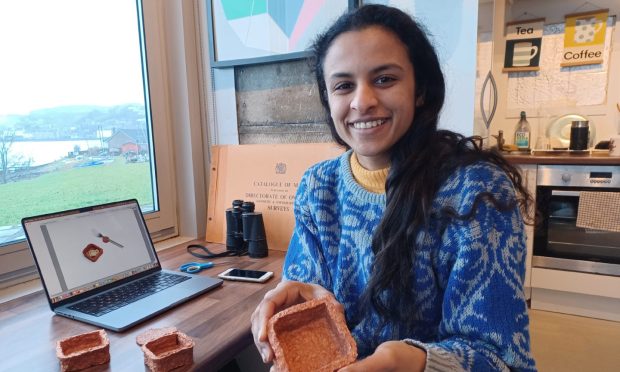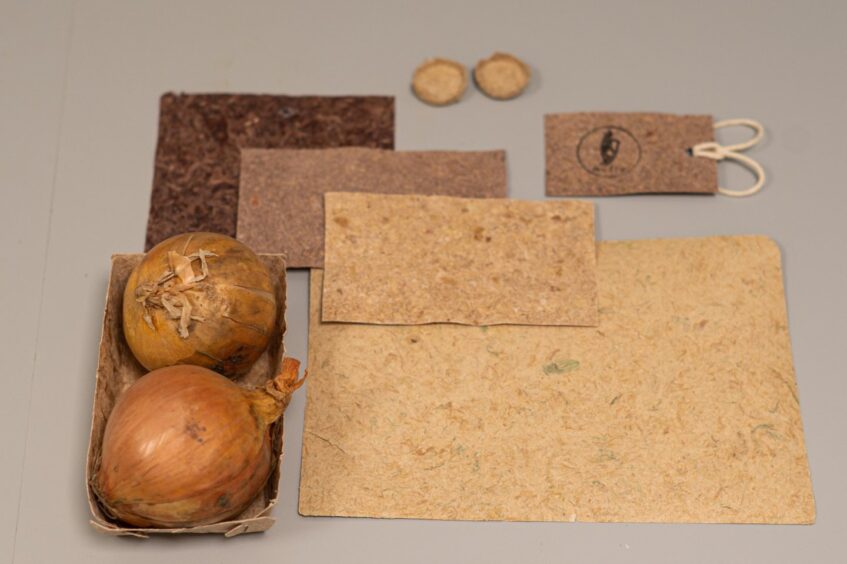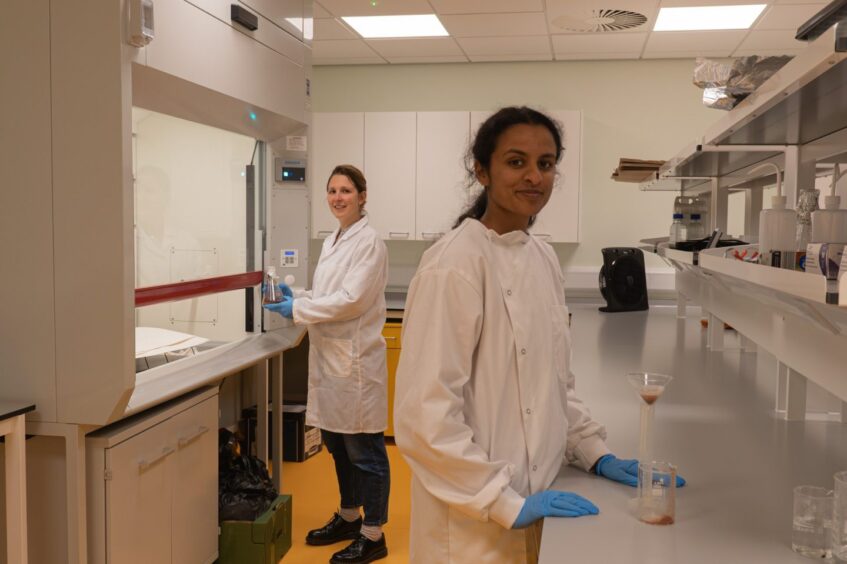Oban-based Renuka Ramanujam is launching her first packaging product made from onion skin and peelings.
The 30-year-old started her business HUID after becoming more and more conscious of recycling while working in the textiles field.
She has moved into a new lab and office space in Oban’s European Marine Science Park in preparation for bringing her products to market.
Onion skin contains anti-bacterial compounds and has anti-oxidants which slow down the oxygenation process that causes food to go off.
HUID has so far created two prototypes – a cardboard-like material, Pyber, and a flexible film equivalent, Cellofil.
‘HUID’ is Dutch for onion skin
The company name reflects Renuka’s extremely varied background. Dutch by nationality, she grew up in Singapore, has been in the UK for 11 years and her parents are from India.
‘Ui’ is the Dutch word for onion and ‘huid’ means onion skin.
Following the appointment of a chief scientific officer, HUID is preparing to launch Pyber as its first product by the middle of next year.
She said: “Onion skins are nature’s own form of packaging, protecting the onion below from harm and are a plentiful waste source.
“Yet, after speaking to various scientists I realised that no one was using them as a material and spotted a gap in the market for a new variety of eco-friendly packaging”.
Benefit of onions
Renuka is being supported by industry-led body, the National Manufacturing Institute Scotland.
Onion skins have anti-microbial properties, meaning the packaging could help extend the shelf life of perishable foods.
Producing the eco-packaging involves extracting high-quality cellulose from outer onion skins and combining it with a biopolymer blend.
Polymers are very long chain molecules made from small repeating units – biopolymers are polymers made from natural sources like proteins, carbohydrates, and fats.
HUID is attempting to reduce waste as UK households throw away an estimated 90 billion pieces of plastic packaging annually.
Renuka, who moved to Oban during the pandemic, said: “Working with NMIS and the AMRL has been instrumental in refining our products and gaining the validation we need to show buyers and consumers that the compostable packaging meets the same standards they might expect from single-use plastic or cardboard.”
HUID award winning
The startup recently secured £150,000 in funding from Innovate UK to improve its processing methods and manufacturing as well as £20,000 from The Greenhouse – a climate tech accelerator programme part of The Grantham Institute and Imperial College London.
Last year Renuka scooped one of Innovate UK’s Young Innovator awards winning £5,000 and in 2022 she picked up £10,000 from Scottish Edge.
Aineias Karkasinas, NMIS sustainability engineer, said: “HUID’s creative use of onion skins minimises waste and is a great response to the current market need for sustainable packaging.
“It has been great to support the development of genuinely sustainable solutions and provide HUID with deeper insights into the environmental performance of its materials.”



Conversation